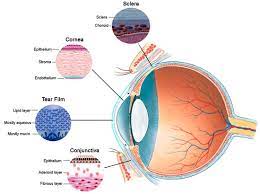Combination Therapy Bests Traditional Cyclosporine for Dry Eye

In a significant advancement for individuals suffering from dry eye syndrome, recent studies have indicated that a combination therapy approach provides superior relief and treatment outcomes compared to the traditional cyclosporine monotherapy.
Dry eye syndrome, a chronic condition characterized by insufficient lubrication on the surface of the eye, leads to discomfort, inflammation, and potential vision impairment. Cyclosporine A, an immunomodulating agent, has been the gold standard in treating this condition by reducing ocular inflammation and increasing tear production.
Despite its widespread use, a subset of patients remain unresponsive to cyclosporine monotherapy. This challenge has driven researchers to explore more effective treatment regimens. Recent clinical trials have tested the efficacy of combining cyclosporine A with other therapeutic agents like corticosteroids, lubricant eye drops, or omega-3 fatty acid supplements.
The results were promising. Patients who received combination therapy experienced a significant reduction in symptoms and inflammation compared to those on cyclosporine alone. The synergistic effect of these treatments offers a multi-faceted approach—cyclosporine A targets the immunologic factors while adjunct therapies provide symptomatic relief and address other mechanisms involved in dry eye.
One study revealed that adding topical corticosteroids to cyclosporine regimen led to faster improvements in tear production and ocular surface health. Another compelling approach was the use of lubricant eye drops containing hyaluronic acid or omega-3 fatty acids, which provided enhanced moisturizing benefits and improved lipid layer quality.
This integrated management has widened treatment options for patients with dry eye syndrome, offering hope for those who have not found relief with traditional therapies. Medical professionals are encouraged by these findings and suggest tailoring combination treatments to suit individual patient needs for optimal outcomes.
With continuous research and clinical trials, combination therapy for dry eye could redefine the standards of care, allowing patients to achieve better quality of life and prevent long-term complications associated with this challenging condition.






